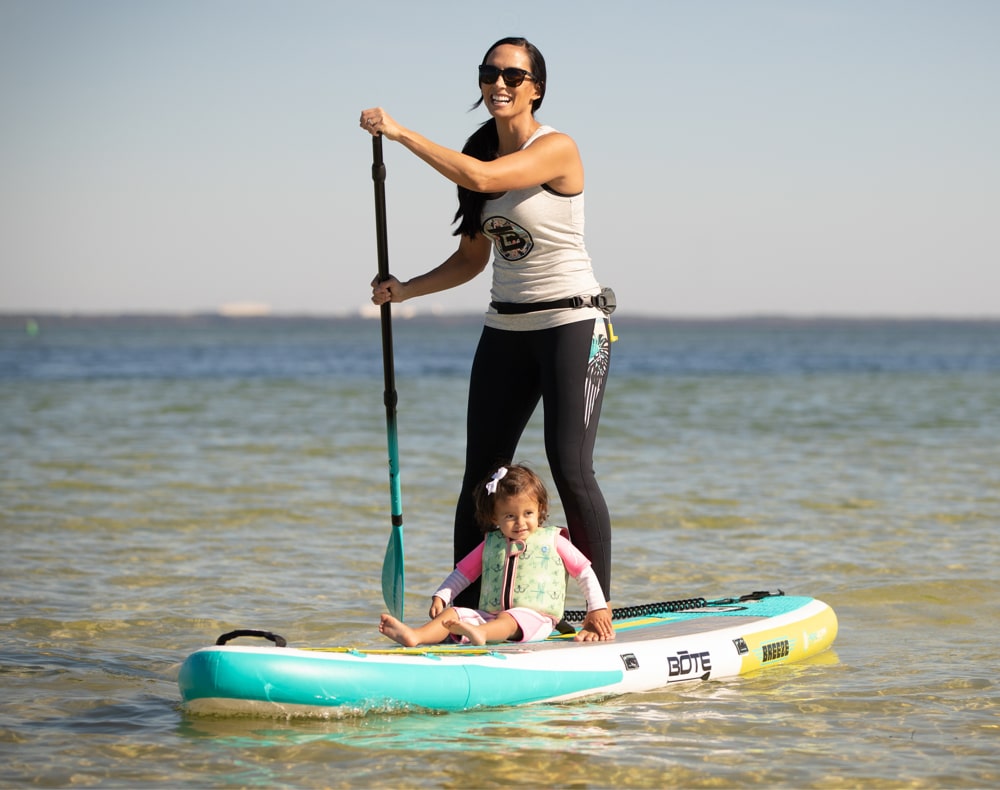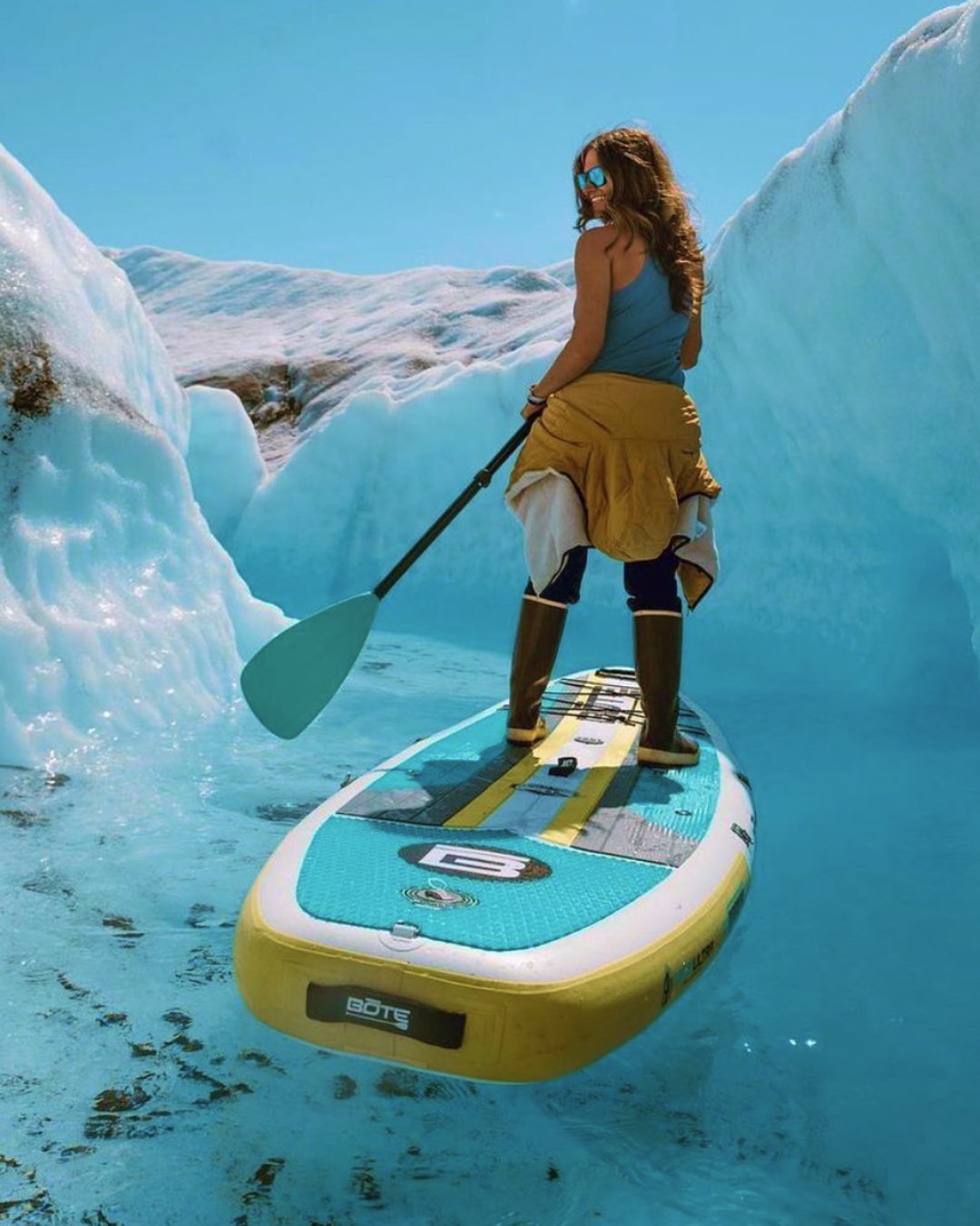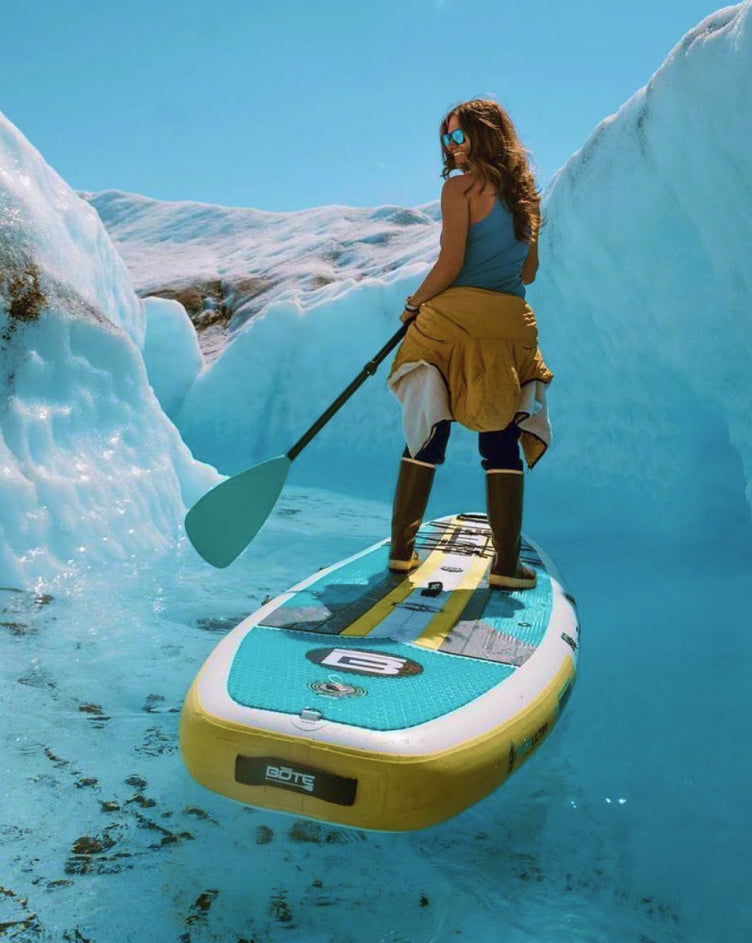Paddle Boarding With Kids
At BOTE, we like to Stand Apart. As a parent, standing apart can mean leading your kids to the right engaging activity―one that doesn't involve a glowing screen―and getting them to engage with the outside world. Of course, we think paddle boarding is the perfect answer to this modern-day dilemma. It's fun, it's physical, you'll make memories together, and (what we like best) it builds confidence in the youngins.
“Getting out on the water helps us stay active and experience locations in a totally different way. It builds confidence and respect for the water and we have seen SO much wildlife...dolphins, manatees, crabs, stingrays, fish, turtles, birds, the list goes on and on.”
-Anna Gordon, mother of 3


Photos by @the.anna.gordon
Getting Started
So how do you start? First, you have to decide if you want them with you (co-paddling) or on their own board. In my personal experience, it's best to have those under 5 riding with a parent. When my kids were under 5, I always took a smaller paddle (or anything that resembles a paddle that is their size). I've found that kids of all ages love to feel like they are helping. Kids are always watching, and anytime they can do something that mimics their parents, it makes their world shine.
After 5, it’s up to you based on your child’s athletic ability and willingness. Prior to letting your child free on their own board, it’s highly recommended that they are strong swimmers and most importantly comfortable. If they’re small enough to still co-paddle, I’d recommend co-paddling a few times prior to setting them free.
I have three kids (current ages: 11, 6, and 3). The older two have successfully navigated paddling on their own, but the first time requires patience and teaching. Like with all firsts, whatever they may be, the first time will be SCARY (even if they don’t show it), you know your kids and every child will be different. You’ll likely have to adjust to each child a little differently. All three of mine are vastly different.

Oldest Child: Had to convince him to paddle alone (he was 5), waiting for the perfect calm day. We spent forever sitting down before he finally decided that he was ready to stand, and boy was that smile worth it. It was a long paddle in time and a short paddle in distance. Fast forward to 11, and he can paddle around like a pro!
Middle Child: "I can do this," (age 6), "I don't need any help, I don't need to wear a life jacket, I know how to hold the paddle…" I have a feeling that a lot of you can relate to this one. So, I let her go and was right beside her and ready to coach her when the fear set in. She chose a rather windy day to declare that today was the day to paddle on her own, but who am I to stop a child that is ready to go. A lot of coaching and have a plan on how to get yourself and an extra board back to your starting point when your child declares "I can't do this," and sits down refusing to paddle.
PRO TIP: Always have a rope on your board; it is surprisingly easy to tow a board behind your own!
Youngest Child: "I’m going to paddle with you on your board forever, but let me hold anything that resembles a paddle because I can do it. I would prefer for you not to touch your paddle unless I decide to let you, and I would also like to instruct you were to paddle and when to stop so that I can splash around at my leisure. Also, at any moment, I may decide that I want to be back on land NOW, so paddle fast!"
When letting children try something new for the first time, our job as parents is to help build confidence by encouragement and often trial and error. If you as a parent yourself are a little fearful of allowing them to paddle alone, I'd encourage you to wait until your fear is gone (or at least the fear that causes a knee jerk reaction of panic that trickles down). Removing hesitation by making sure you are comfortable paddling alone before trying to teach your child to will be a much more pleasant experience for everyone. Your kids need to feel that YOU are not scared and that you believe they can do it; otherwise, it's going to be hard to teach them. There are a few outdoor activities that scare the shit out of me. For these, my husband takes the reigns and shows them (dirt bikes and 4-wheelers). I simply have learned to let him lead here because I'm a little fearful, and that fear, if voiced while they are learning, could distract them.
My two older children, while powerful swimmers, were fearful when setting out on this new activity alone for the first time. Tell your kids to sit when first starting out, and stand up when they are comfortable. Let them know that it's okay to go back and forth! Encourage them not to panic and remind them that you're there to help them if they need it. Panic can happen pretty quickly when a child feels like they can't control the board. Wind (even a slight one) can cause the board to gain a little control, and it's going to take some time for a child to learn how to use the paddle to balance against it.
I am there to support them, encourage them, and cheer them on as they get stronger when paddling alone. The smile on my children's faces when they realize they can paddle alone is priceless and one of the memories I will always look back on and smile. It's no different than a child losing their training wheels or learning to swim the first time.

We typically go out on 3 boards these days, my youngest on a board with me, and older two each on their own boards. One of my must-take-everytime items, like I mentioned before, is a small rope to be able to tie off my children to me, should I need to pull their board(s) in! They tend to like to jump in and out of the water, and then sometimes they just get a little lazy, so I've found that being able to tie them off to me and pull them back to our starting point has been a real-life saver. Also, with kids paddling on their own, don't plan too long of an excursion the first few times! Like anything, if you have the chance to introduce them to co-paddling when they are younger, the transition to paddling their own board will be a little more fluid. But don't be discouraged from letting an older child start alone from the get-go if they want to.
Recommended Packing List:
- Waterproof Bag
- Water
- Snacks
- Sunscreen
- Goggles
Finding the Right Board
The most important thing to do if they're going solo is to find a board that is sized for them. A shorter board will help maneuverability and a wider board is more stable. Also, you need to size the paddle for them. When standing on land, their arm should be at a 45-degree angle when holding the handle. We recommend an adjustable paddle for kids so that it can grow with them.

Photos by @the.anna.gordon
For co-paddlers, just make sure you calculate a total weight (you + them + gear). You’ll also want a stable board so they can move around a little. If you have multiple kids, consider a big board that can hold the whole crew.

The Skills
Hopping out on some flat water, paddling will come pretty natural for most kids. And falling is a lot more fun than on a bike, right? With a well-fitting life jacket, the appropriate gear, and a little patience, your kid will be crushing it in no time.
For Co-Paddlers:
- Start with them seated at your feet. Remember that the more they move around, the more challenging it will be for you.
PRO TIP: practice in shallow, calm water first so everyone can find their balance and place on the board. - When they want to stand, have them stand just in front of you. If they show an interest in paddling, bring an extra paddle, just always keep yours so you have control of the board.
- Once comfortable, encourage them to move about your board, stick their toes and hands in the water. And a favorite, if the sun is shining, plan a few breaks for jumping into the water.

For Solo Paddlers:
- Starting on land, do a quick walkthrough on how to position themselves on the board, how to paddle, how to turn, and what to do with their paddle when transitioning from kneeling to standing. Once out on the water, be ready to repeat those things several times.
- Show them how to hold the paddle and the basic stroke (with BOTE paddles, the logo on the shaft near the blade should face forward).
- When it's time for the water, start shallow, but be sure they only mount a board once they're at least knee-deep. I always encourage kids when they begin to start from a kneeling position and to stand once they are ready. In no time they will be able to start from a standing position, but it's always easier to let them take the lead once they're comfortable.
Remember: It’s all about keeping things simple and fun, don’t overthink it.
Common Sense Safety
If you're a competent paddler and parent, everything will be just fine. But since kids are involved, we thought we'd hit some safety highlights.
Don’t be an amateur: If you've never paddled before, learn the sport before introducing it to your kids. If they're riding with you and fall off, you want to be confident that you can get your kid back on the board without both of you going in. If your kid is old enough to go solo, make sure you can paddle to them if they have a problem.
Always wear a life jacket: Obviously, your kid needs to be in a life jacket, even if they're an all-star swimmer. My kids are proficient swimmers, and we wear life jackets while paddling, and I allow them to take them off only if we are breaking, and they want to swim for a bit!
Stay on calm water: Pick a location that you've paddled before and one that has more peaceful conditions. Even a slight breeze or current can turn their board into a treadmill. Be mindful of currents and always paddle against them first, so it's an easy return. You'll want to steer clear of the ocean until they nail their balance and stay close to shore so you can both paddle in easily.
Check the forecast: As mentioned, strong wind on a paddle board sucks even for adults. If the wind is under 10 knots (approximately 11 mph) it's generally safe for any skill level. Even so, notice the direction it's blowing (or the way the current is flowing) and paddle AGAINST it to start so you or your kids don't get too exhausted to get back in. Never paddle in offshore winds with kids and don't go if storms are predicted.
Teach them basic water safety: To ride along, your child should be comfortable in the water and able to swim with a lifejacket. Once they get more confident and are standing, show them how to fall safely (aim for the water, not the board) and how to get back on the board in the water. It's not difficult but worth practicing before sending them off solo. Of course, you want them comfortable but not TOO comfortable. Make sure they always paddle with an adult.
Plan to take breaks: Meltdowns happen. So do tired arms. Either stay close to shore so you can paddle in, or bring an anchor or sandspear so you don't drift when someone needs to take a break.
Bring a Rope: It’s fun to tie the boards together if taking a break and having a way to tow a board in sometimes comes in handy!




Photos by members of the BOTE Board Club on Facebook: (left to right) Brandy Clark, Philippe Tort, Josh Hamill & Mike De Vito.
Paddle boarding is FUN and easy to share with the whole family. It can be a hell of a lot more interesting than a family bike ride or hike, particularly if you have some pretty scenery along the way. It's a sport that takes some time to master, but it's worth it when you see that smile of satisfaction that comes from conquering something new.











